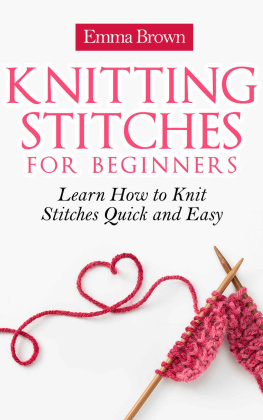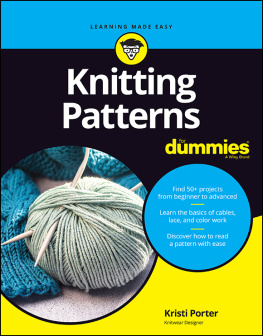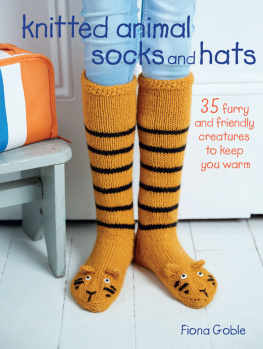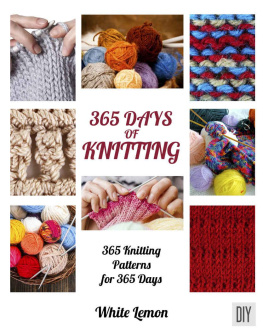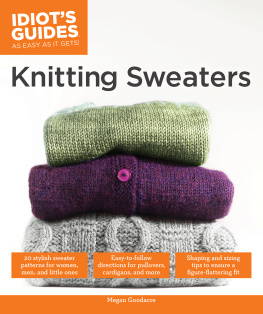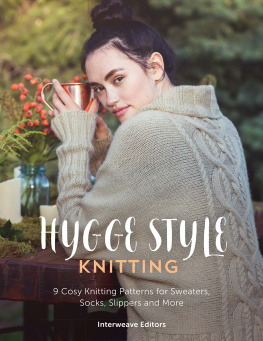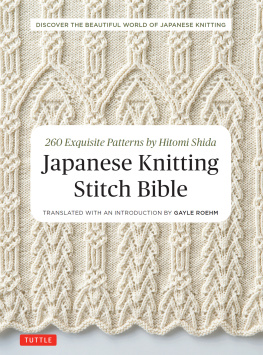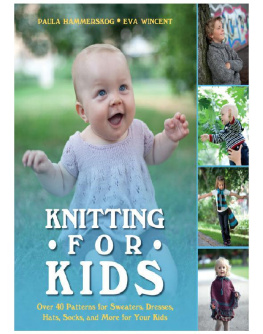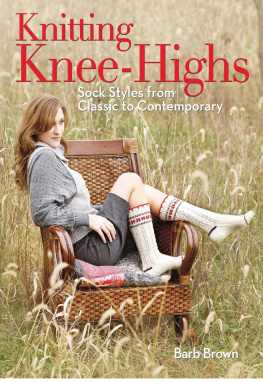50 Shades of Stitches - Classic & Contemporary Knitting Patterns
Volume 2, Volume 2
Marina Molo
Published by Scr Media Inc, 2020.
While every precaution has been taken in the preparation of this book, the publisher assumes no responsibility for errors or omissions, or for damages resulting from the use of the information contained herein.
50 SHADES OF STITCHES - CLASSIC & CONTEMPORARY KNITTING PATTERNS
First edition. April 16, 2020.
Copyright 2020 Marina Molo.
ISBN: 978-1632272676
Written by Marina Molo.
10 9 8 7 6 5 4 3 2 1
50 Shades of Stitches
Popular Ribbing
Knitting Patterns with Step-by-Step Instructions
Copyright 2019 by SCR Media Inc. All rights reserved. This book or any portion thereof may not be reproduced or used in any manner whatsoever without the express written permission of the publisher except for the use of brief quotations in a book review.
Printed in the United States of America First Printing, 2019
ISBN 978-1-63227-099-3
SCR MEDIA Inc
Box 7103
Delray Beach Fl 33482
561-909-6975
If you enjoyed this book and found some benefit in reading this, Id like to hear from you andhope that you could take some time to post a review on Amazon. Your feedback and supportwill help this author to greatly improve her writing craft for future projects and make this bookeven better. Just type this link into your web browser Getbook.at/Vol1 or scan code below.

QR CODE
Contents
Get a Free Paperback Review Copy of this Book!
Would you like a paperback copy of this book for handy reference? I have a limited supply of copies for readers in the United States. Send me an email with your postal address and Ill send is as soon as possible.
Introduction
Alternating knit and purl stitches in various combinations creates ribs, which, due to their simplicity and stretchy, voluminous texture, are very popular. There are two types: simple ribs, which consist of alternating knit and purl stitches, and decorative ones, which include other elements of knitting such as yarn overs, slipped stitches, elongated stitches, and twisted stitches.
Simple ribs have steady names such as 1x1, 2x2, 3x3 and the like, which indicate the numbers of alternating knit and purl stitches. The first digit indicates the number of knit stitches and the second digit indicates the number of purl stitches. Decorative ribbed patterns usually have various fancy and intricate names.
The names of numbered ribbed patterns are always the same, whereas the names of decorative ones may vary. The same decorative pattern can have several names, or two different patterns can have the same name. Since most decorative patterns do not have steady names, in this book they will be unnamed, letting knitters call them as they like.
Ribbing is almost an essential element of knitting. It is used for preventing the edges from curling up. Ribbing is also frequently used as decorative patterns. We recommend knitting ribs tightly and through the back legs. It will reduce their tendency to stretch, as the knit fabric will keep the shape better. Tight knitting works well in combination with knitting through the back legs, which is the second way of knitting.
For beginning knitters, we would like to say that there are two ways of knitting stitches. The first way, most common, creates a plain loop by knitting through the front leg of the stitch, which is the leg of the stitch closest to the front side. The second way of knitting is knitting through the back leg of the stitch, closest to the backside. In this book, for clarity, well call the firstconventionalway knitting through the front leg and the second way of knitting knitting through the back leg. Purl stitches of the first and second ways of knitting are also worked differently (see recommendations below).
Despite the rules, the way of knitting stitches is a matter of habit and preference, and many knitters prefer the second way, i.e., knitting through the back leg, as many patterns can be knitted both ways. Sometimes, however, patterns require a specific way of knitting stitchesthrough the front legs or through the back legs or a combination of bothand incorrect turns of the stitches can distort, significantly change, or completely ruin the design of the pattern.
Some knitters tend to mix the first and second ways of knitting, i.e., knitting through the front leg and knitting through the back leg, using knit stitches of the first way of knitting and purl stitches of the second way of knitting. This mix, however, affects the evenness of stitches, and as a result, it affects the texture of the knit fabric.
Ribbed patterns, in particular, is better to knit the second way, working both knit and purl stitches this way. When a ribbed pattern is knitted the second way, it stretches less, holds the shape better, and has more tight texture. Some ribbed patterns, however, especially braids and cables with frequent intersections, is better to knit conventionally, i.e., through the front legs, in order to add some softness to frequently intersected stitches.
Twisted stitches is a particular method of knitting. These stitches, as regular ones, can be knitted two ways. The first way of knitting twisted stitches is based on knitting through the front legs; and the second way of knitting twisted stitches is based on knitting through the back legs. Lets look at both ways.
In the first way of knitting twisted stitches, the knit stitch works through the back leg, instead of the front leg, as usual, and the purl stitch works through the back leg, instead of the front leg, as usual; however, the purl stitch works the same way as if to purl in regular knitting through the front leg, when the knit stitch sets up to be knitted through the front leg, thus the stitch becomes twisted. The stitches of the first way are less twisted, less tight, and come out more even.
In the second way of knitting twisted stitches, the front leg of the knit stitch moves to the back, inserting the right needle through the back leg from back to front and slipping it onto the right needle, then inserting the left needle through this slipped stitch from left to right and slipping it from the right needle to the left one, and then this stitch knits through the back leg (i.e., through the former front leg); the purl stitch works through the back leg, instead of the front leg, as usual, as if to purl in regular knitting through the back leg when the knit stitch sets up to be knitted through the back leg. The stitches of the second way are tighter as they are more twisted and also because they are based on knitting through the back legs, which is more tight than knitting through the front legs.
Twisted stitches is an element of decorative knitting. They are smaller and tighter than regular stitches and look like tiny braids. These stitches are frequently used in complicated Japanese knitting patterns. In regular knitting, twisted stitches can be used for trimming, in ribbing 1x1 or 2x2, various little braids and cables, and the like. As we can see, all ways of knitting stitches are essential and have a purpose. Whatever way you prefer or require to knit for a certain pattern, just remember that knitting the stitches correctly will improve the quality of your work.
Marina Molo
Recommendations
Two Ways of Knitting Stitches
Knitting through the front leg: Knit through the front leg, inserting the right needle through the stitch from left to right; purl as follows: with the working yarn in front of the stitch, insert the right needle through the stitch from back to front and wrap the working yarn counterclockwise around the tip of the right needle, then pull the working yarn with the right needle through the stitch.


